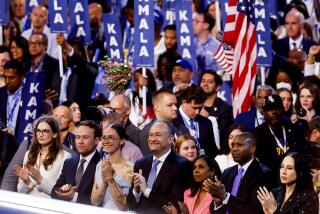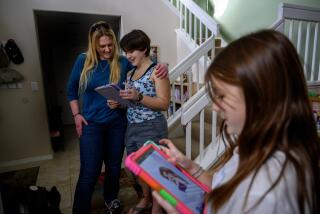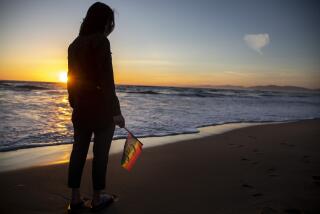More Americans consider themselves multiracial
The number of Americans who consider themselves multiracial has grown faster than any other racial group nationwide, new Census Bureau data reveal, a sign of slow but momentous shifts in the way that Americans think about race.
Mixed or multiracial people are still just a small slice of the American public, but their numbers jumped 6.6% between 2010 and 2012 â four times as fast as the national population, according to new estimates from the U.S. Census Bureau. Experts say their ranks will only continue to swell.
Researchers give two reasons for the rise: More people are wedding across racial lines than in decades past, bringing about more multiracial children. Roughly 15% of new marriages were interracial in 2010, compared with 6.7% in 1980, the Pew Research Center found last year. Census estimates show that children and teens were nearly three times as likely as adults to be multiracial, with 4.8% of people 18 or younger being identified as two or more races last year.
On top of that, experts say people who were long prodded to think of themselves as only âblackâ or âwhiteâ or âAsianâ are becoming more comfortable choosing more than one race.
Mingling of races âhas been with us forever in this country, and it has been erased and denied,â said G. Reginald Daniel, professor of sociology at UC Santa Barbara. Today, âthat has begun to unravel. That is what youâre seeing with these figures.â
Deanna Rafla-Yuan, a 20-year-old student at UCLA, is an example. Every now and then, Rafla-Yuan is asked to check a box: What race is she? There isnât a box for âhalf Egyptian, half Chinese,â she said. Sometimes she answers âMiddle Eastern,â sometimes Chinese or African.
âIf they let you pick more than one, Iâll pick as many as I can,â Rafla-Yuan said.
The census started allowing Americans to select two or more races only recently, at the turn of this century â an example of how attitudes have lagged behind the reality of mixed race. The country is now led by a president with an African father and a white mother. President Obama identified himself solely as âblackâ on the last census, but his racially mingled family is a celebrated part of his story.
For African Americans, in particular, the âone drop ruleâ that historically defined blackness is relaxing. Sixteen years ago, when golfer Tiger Woods dubbed himself âCablinasianâ â Caucasian, black, American Indian and Asian â critics said Woods was denying his black heritage, said New York University associate professor of sociology Ann Morning.
âIf Tiger Woods said that today, I donât think he would get the same flak,â Morning said. âThere has been a sea change in American thinking.... Weâre no longer looking at Barack Obama or Mariah Carey and automatically saying: âThose are black people.â â
The new estimates show multiracial people make up 2.4% of the national population, totaling more than 7.5 million people. Many scholars believe it is actually a much bigger group, particularly when it comes to people who have Hispanic roots. The census does not count Hispanics as a race, so people who see themselves as a mix of Hispanic and another race may end up marking off only one race in that section of the census â and not be counted as âtwo or more races.â
âFor mixed Latinos thereâs no answer,â said Thomas Lopez, director of Latinas and Latinos of Mixed Ancestry, a project of the nonprofit Multiracial Americans of Southern California. When the Census Bureau ran an experiment three years ago giving people a chance to claim Hispanic along with at least one other race, 6.8% did so.
The new estimates do not count the category of âsome other race,â which is also likely to reduce the count of multiracial people. In addition, University of Minnesota sociologists found that even after the census started allowing people to mark more than one race, surprising numbers of children who had parents of different races were not being reported as multiracial â another sign that there are more mixed people than are counted.
Scholars caution the trend does not mean race barriers are collapsing. Marriage is still much more likely between people of the same race. Rafla-Yuan and other mixed students are still dogged by the persistent question: âWhat are you?â
âAmericans are becoming more nuanced in their understanding of race,â said Carolyn Liebler, assistant professor of sociology at the University of Minnesota. âBut I donât think race is becoming less important in our society.â
More to Read
Sign up for Essential California
The most important California stories and recommendations in your inbox every morning.
You may occasionally receive promotional content from the Los Angeles Times.










